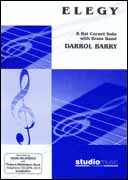We've found 443 matches for your search. Order by
Results
-
 £42.95
£42.95 -
 £39.60
£39.60 -
 £24.60
£24.60 -
 £50.90
£50.90ELEANOR RIGBY (Brass Band) - Lennon & McCartney - Fernie, Alan
Medium
Estimated dispatch 7-14 working days
-
 £50.90
£50.90ELEANOR RIGBY (Brass Band) - Lennon & McCartney - Geldard, Bill
Medium
Estimated dispatch 7-14 working days
-
 £26.50
£26.50 -
 £47.60
£47.60ELEGIE Op.30 (Euphonium Solo with Brass Band) - Vieuxtemps, Henri - Ruedi, Thomas
Grade: Easy/Medium.
Estimated dispatch 7-14 working days
-
 £42.95
£42.95ELEGY (Cornet/Brass Band) - Barry, Darrol
Recorded by Mark Wilkinson with Foden's Richardson Band on Polyphonic CD QPRL221D Sunburst Also available: B flat Cornet (or Trumpet) and Piano edition.
Estimated dispatch 7-14 working days
-
 £50.90
£50.90ELEGY op.58 (Brass Band) - Elgar, Edward - Smith, Sandy
Medium/Easy
Estimated dispatch 7-14 working days
-
 £50.90
£50.90ELENA'S ARIA (Vocal Solo (Soprano) with Brass Band) - Verdi, Giuseppe - Fernie, Alan
From Sicilian Vespers. Grade: Medium.
Estimated dispatch 7-14 working days
